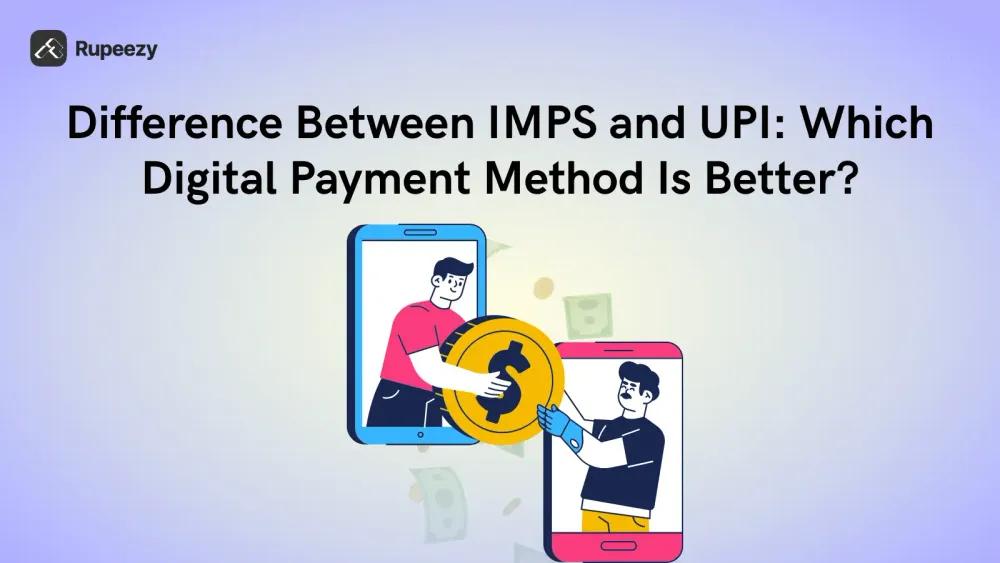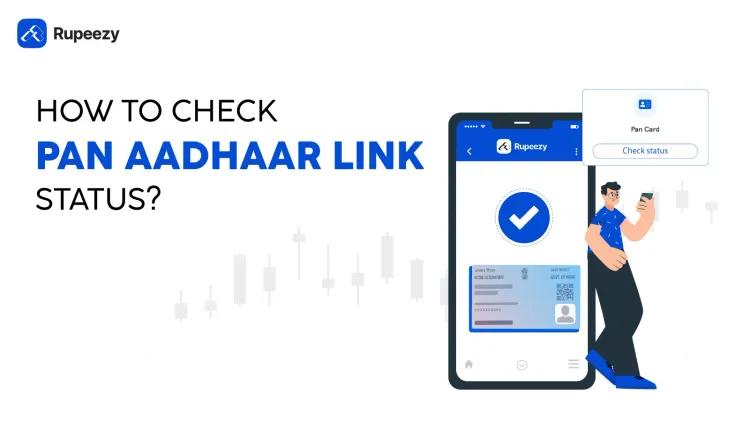Difference Between IMPS and UPI: Which Digital Payment Method Is Better?


00:00 / 00:00
As an individual, you potentially make multiple payments to different people on a daily basis. Be it to the grocery store or even the insurance payment, today all of these are done through online payment mode. This usually includes IMPS, NEFT, or UPI payments.
While NEFT takes time to settle, the other two are quick payment options which save time and can be done within minutes. But have you ever wondered what the difference is between IMPS and UPI? Also, which os these is a better choice to use for daily transactions?
Well, if you are also looking for an answer to the same, then read this guide to explore all the details you need.
What is IMPS?
IMPS (Immediate Payment Service) is a real-time interbank electronic fund transfer system. It allows instant money transfers between banks. This service is available 24/7. It works using bank savings account numbers and IFSC codes. This payment system is managed by the National Payments Corporation of India (NPCI).
Features of IMPS
Allows instant fund transfer 24*7 and works on holidays as well.
The payment is completed using the account number and IFSC code.
It can be completed using a mobile app, net banking, or ATMs.
The overall transaction limit for a day is Rs. 5 lakhs only.
It is safe and secure and uses an authentication system.
The funds are settled within minutes, which makes it efficient.
Charges may apply, depending on the bank.
What is UPI?
UPI (Unified Payments Interface) is a real-time payment system. It helps you to transfer the funds within accounts or mobile numbers using the UPI applications. This system uses the Virtual Payment Address (VPA). This means the transactions can be done even when you do not have the account number or IFSC code. The facility for barcode scan and transfer is also there for UPI. It is also operated by the NPCI.
Features of UPI
Allows you to transfer the funds anytime with the help of VPA, mobile number, or QR code.
Available 24/7 and works across all UPI-supported banks and apps.
No need to remember bank account or IFSC details.
Transaction limit up to Rs. 1 lakh per day (varies by bank).
Mostly, there are no to very minimal processing charges for the transactions.
Allows bill payments, merchant transactions, and fund requests.
Pros and Cons of IMPS
IMPS is a reliable and fast payment mode. It allows quick transfer of funds between the bank accounts. This can be used to make a transfer between the savings and current accounts. But just like any other payment model, it has its own limitations and benefits.
Pros of IMPS
Instant transfer facility available 24x7, including weekends and holidays.
Accessible through mobile banking, internet banking, or ATMs.
Highly secure with two-factor authentication for every transaction.
Suitable for large fund transfers up to Rs. 5 lakh per day.
Cons of IMPS
Beneficiary account number and IFSC code are mandatory, which makes it a bit slower.
A bank can charge a transaction fee.
The interface differs, so it can be hard to use at times.
Pros and Cons of UPI
UPI has transformed the way people make payments in India. This is not just a quick and simple option, but also allows you to make payments on the go. This saves time, also you can make smaller payments just to ensure accuracy. Even though it has many benefits, there are certain cons too.
Pros of UPI
Quick and simple transfers using mobile number, QR code, or VPA.
Usually free or carries minimal charges per transaction.
Works across all UPI-supported banks and apps, ensuring simplicity.
Perfect to make payments for shopping, rent, bills, and others.
There is a request for features to ask for payments as well.
Cons of UPI
The transaction limit is less (usually Rs. 1 lakh per day).
Requires a stable internet connection for smooth processing.
Occasional transaction failures during peak usage hours.
What is the Difference Between IMPS and UPI?
There is no doubt that IMPS and UPI are both great modes of transaction. But still, certain differences between UPI and IMPS make them unique in nature. Knowing them will help you to ensure that you select the right payment mode for your transactions. So, here are the ones that you know of.
Feature | IMPS | UPI |
Full Form | Immediate Payment Service | Unified Payments Interface |
Launched By | National Payments Corporation of India (NPCI) in 2010 | National Payments Corporation of India (NPCI) in 2016 |
Transfer Method | Uses account number and IFSC code | Uses Virtual Payment Address (VPA), mobile number, or QR code |
Transaction Limit | Up to Rs. 5 lakh per day | Up to Rs. 1 lakh per day (varies by bank) |
Charges | Minimal charges based on the bank | Free to very low charges |
Availability | Can be done anytime which means 24*7 availability | Work well 24*7 with no lapse |
Channels of Access | Internet banking, mobile banking, and ATMs | UPI apps like Google Pay, PhonePe, Paytm, BHIM |
Speed of Transfer | Quick and instant transfer, which takes a couple of minutes to settle | Instant transfer that settles within seconds |
Ease of Use | Requires beneficiary details setup | Simple and user-friendly, no account details needed |
Best For | Large interbank fund transfers | Every day mobile payments and merchant transactions |
Which is Better: IMPS or UPI?
Both IMPS and UPI are fast and secure payment systems. But when it comes to selecting one over the other, many factors play a crucial role. The first thing that you need to consider is the amount that you need to transfer. So, if the amount is high, IMPS is a better choice.
Also, if you are looking to make frequent small payments, then going for UPI can be simple and quick. There are no charges, so that is definitely a win.
So, for business transactions, go for IMPS, and for personal daily transactions, UPI is a better choice.
Conclusion
Both IMPS and UPI have simplified the way India transacts digitally. While IMPS is perfect for secure, high-value transfers, UPI is unbeatable for everyday, quick payments with just a tap. The choice ultimately depends on your transaction purpose and convenience.
If you want to explore how to manage your money smarter and invest confidently, visit Rupeezy to start your financial journey today.
FAQs
Can I use IMPS and UPI for international transfers?
No. You can use IMPS and UPI to make domestic payments only. These are not permitted for international payments.
Which is safer, IMPS or UPI?
Both are safe and regulated by NPCI. But if you are doing a large number of transactions, then IMPS is a better choice to make.
Is there a fee for UPI or IMPS transfers?
There is a minimal fee that the bank charges for IMPS. But the UPI is totally free.
Can I use IMPS without internet access?
Yes, IMPS can be used through ATMs or SMS banking even without the internet.
What is faster, IMPS or UPI?
Both offer instant transfers, but UPI is often quicker for peer-to-peer mobile transactions.
The content on this blog is for educational purposes only and should not be considered investment advice. While we strive for accuracy, some information may contain errors or delays in updates.
Mentions of stocks or investment products are solely for informational purposes and do not constitute recommendations. Investors should conduct their own research before making any decisions.
Investing in financial markets are subject to market risks, and past performance does not guarantee future results. It is advisable to consult a qualified financial professional, review official documents, and verify information independently before making investment decisions.

All Category










